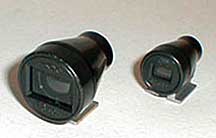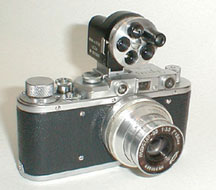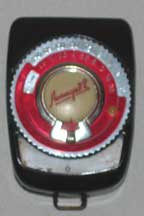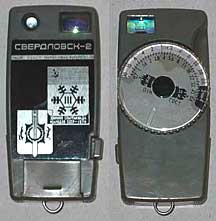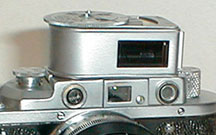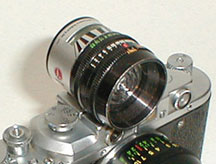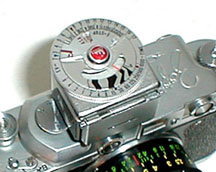Lenses & accessories
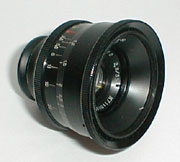
This is a Jupiter 12, 35mm f2.8 lens and auxiliary finder. It is an exact copy of the pre war Zeiss Jena Biogon 35mm lens. The J-12 rear element protrudes into the camera body almost touching the shutter curtain. In fact, the lens won't fit some non-Russian Leica screw mount cameras with through-the-lens meters. You have to be very careful mounting the lens not to scratch the element. Many Russians claim the later J12s (black housing) are superior to the earlier models (silver housing.). J-12s usually sell in the $50 to $80 range, depending on condition. Finders are extra.
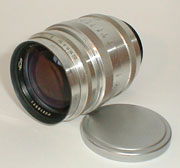
Like the Jupiter 12, this is a Jupiter 9 85mm f2 lens is an exact copy of a German Zeiss lens. There are very good examples of this lens and a lot of very bad ones. Many of the lenses have been ruined by amateur repair attempts--it's a very complicated lens. A good Jupiter 9 is an excellent portrait lens. An 85mm auxiliary finder or the KMZ turret finder is a must if you want to use this lens on a rangefinder camera. A nice J 9 can bring $100 or more at auction.

The Industar 22 lens is a carbon copy the the German Elmar 50mm f3.5 lens. The I-22 was the standard lens on virtually all Zorki 1 cameras and was used to some degree on all Zorki models except the Zorki 3. It was gradually phased out in favor of the rigid Industar 50 lens (there also was a collapsible model of the I-50 that looks just like the I-22 except for the name). All Zorki I-22s are coated (the prewar FED I-10 copy of the Elmar wasn't). The I-22 is a decent performer and when matched with the Zorki 1 makes very compact unit that is still popular with backpackers.
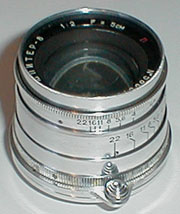
The Jupiter 8 50mm f2 lens is an exact copy of the Zeiss Sonnar lens and is an excellent performer. It first appeared on the Zorki 3 in 1953 and on the rare Zorki 1C with slow shutter speeds. It was the standard lens on Zorki 3s and could be ordered as an extra on later Zorki models. One of its weak points is the lens barrel is aluminum and is easily damaged if dropped--especially the filter threads on the front. The lens takes 40.5 mm filters. Another negative is that aperature ring doesn't have click stops so it is easy to accidently change the setting. The lens was originally available only in a white metal finish but in the 1970s was also made with a black finish.
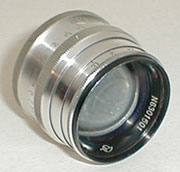
The Jupiter 3 50mm f1.5 lens is the high end of the LTM Soviet lenses. It is a copy of The Zeiss Sonnar 1.5 lens. The Jupiter 3 is much heavier than the Jupiter 8 and appears to have a steel lens barrel instead of aluminum. Like all Russian lenses except the I-61 L/D, however, the J-3 lacks click stops on the f-settings. These lenses are still much in demand and bring anywhere from $50 to about $80. Like the Jupiter 8, it accepts 40.5mm filters. Unfortunately, a lot of the Jupiter 3s look a lot better than they perform. If you fing a sharp one, savor it.
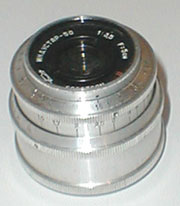
The Industar 50, 50mm f3.5 lens replaced the Industar 22 as the entry level lens on Zorki cameras. The lens formula is virtually identical to the I-22 but the mount doesn't collapse. The I-50 is allegedly sharper that the I-22. It first appeared on Zorki C and 2C cameras and was used on all the later models. A black version became the standard lens on the Zorki 4K. The I-50 also came in a collapsible mount.
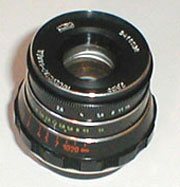
The I-61 55mm f2.8 lens was never sold on new Zorkis (it was made for the FED 5) but has a reputation as one of the best Leica thread mount lenses made by the Soviets. It has outstanding sharpness and contrast. The LD it the only Soviet LTM lens with click stops and a rare earth coating that reflects yellow instead of blue when looking at it from the front. It uses the same 40.5mm filters as the Jupiter 8. Although it isn't historically accurate to use the I-61 LD on a Zorki, it's a great shooting lens.
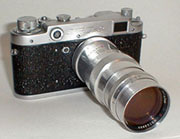
I have to admit the Jupiter 11, 135mm lens doesn't excite me much. I would say the same thing about the 135mm lenses for Leica and Canon rangefinders. The 135mm lens is awkward on this type of camera, as can be seen from this photo. I believe if you want to work with a telephoto longer than 100mm you are better off using a single-lens reflex camera. A lot of photographers must agree as the 135mm rangefinder lenses are relatively inexpensive -- even the ones made by Leitz for the Leicas. The J11 lens tube is aluminum. You have to be very careful mounting this lens because the focusing collar always protrudes slightly from the rear, even at infinity. This make it easy to misalign it when attempting to thread it onto a body. I believe the lens is more of a collectible than a user.
